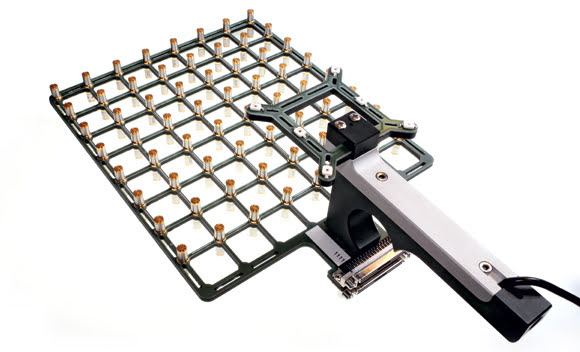LEARN MORE
MEASUREMENT MICROPHONES
One of the challenges for the automotive engineer is understanding the cause of a noise problem. Simple measurements, such as those done using a single microphone, can reveal the frequencies at which the sound pressure level is dominant, but cannot provide insights into the location of the sources.
Positioning the microphone at different locations close to the presumed source can help, but this approach can lead to faulty conclusions because it depends heavily on the locations selected, and on the engineer’s interpretation of the data.
Microphone array techniques can help engineers to make the right decisions more quickly by visualizing the sound field on the surfaces of interest. Visually representing the sound field makes it much easier to identify noise issues caused by phenomena such as acoustic leakage from openings or from structural resonances.
Rather than displaying only sound pressure levels, microphone array techniques provide more acoustic quantities such as sound intensity, particle velocity, and sound quality metrics – all of which can be necessary to understand the noise-generating mechanisms.
This whitepaper describes array techniques that can provide even more sophisticated insights.
READ FULL WHITEPAPER
HAND-HELD ARRAYS
IN AUTOMOTIVE NVH
One such is intensity component analysis, which can extract the sound intensity coming from in front of the array while suppressing sound from behind – making an effective tool for vehicle cabins, which have very diffuse fields. Another method presented is panel contribution, which separates the contribution of individual panels to, for instance, the driver’s ear position inside a car.
The in situ absorption method can be used to calculate and visualize the absorption coefficients of the ceiling of a vehicle, rather than having to perform the measurement on a material sample in an impedance tube.
All these methods use the same small, hand-held array, which is easy to move around inside a cabin environment and fits easily in narrow spaces. And because the array has two layers of microphones it is effective in conditions with sources or reflections that come from behind the array, which is typically the case inside cabins.


